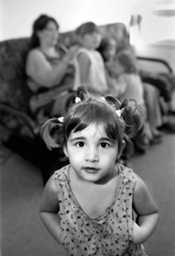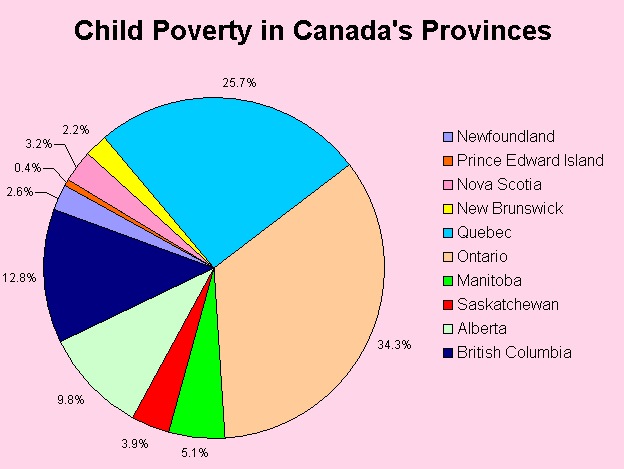

You will learn the answer to the question later on in the presentation.
When ISARC (Interfaith Social Assistance Reform Coaltion) asked children facing poverty in grades 4 & 5 what they thought poverty was they answered with this statement: Poverty is: Not having breakfast sometimes; being afraid to tell your mom that you need new shoes; sometimes really hard because my mom gets scared and she cries; not being able to take swimming lessons; not getting to go on school trips; being teased about the way you are dressed;

Poverty impacts children deeply. It can affect their physical, emotional, mental and educational healthy development.
Poverty has been known to cause stress. This stress has been linked to some cases of abandonment, emotional and physical abuse.
When children are in the hands of Children's Aid Care they gain social and emotional, short and long term problems. These include:


When children are separated from a parent (especially mom) they can have long term emotional effects.
The first five years of a child's life are by far their most important ones for brain development. The importance of education, stimulation, loving interaction and attention during these five years are extremely needed.
Dr. Mustard of the Canadian Institute for Advanced Research states "brain development is fostered by nutrition and stimulation. By the time a child has reached age five, most of the brain's wiring is complete; reversing the poor development is difficult after this age" (City of Toronto Children and Youth Action Committee:1998)
Issues such as
exist for many children and youth and may present themselves as behavioral, social, family and educational conflicts.
"When I was in the shelter, the hardest thing for me was seeing my daughter depressed. You try to make yourself happy so they don't see you depressed, but at times the kids' sadness is in their faces and in their voices" (Deloris Smith)
Children in low income families are alomost prone to low self-esteem and mental health.
Children who live in poverty encounter more difficulties achieving healthy development and are at a greater risk for a wide range of negative outcomes to their health and wellbeing. Research shows that some of these outcomes are lower functioning:
When asked, "What does it mean to be a poor child in Canada?" Amanda responded "It means no toys"

This is what young Amanda created. The bear on the right symbolizes what all the other girls her age have. The bear on the left symbolizes the bear she has.

Ontario has the highest child poverty rate.
Children's Rights
Next: Homelessness